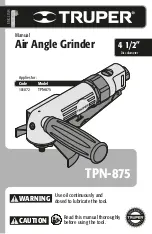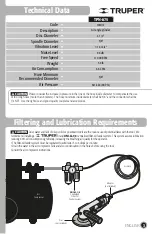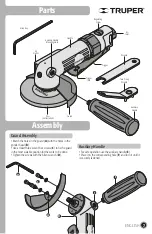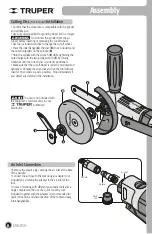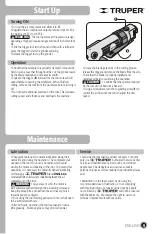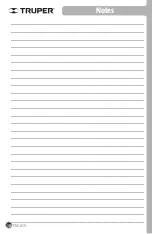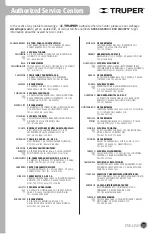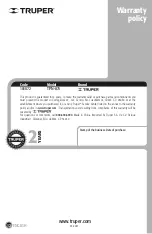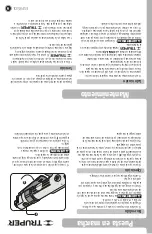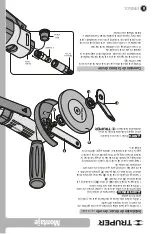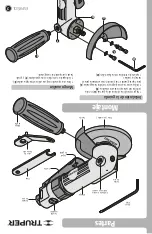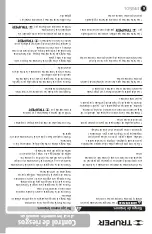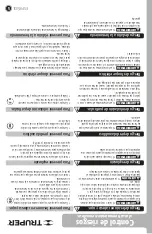
5
Risk Control When Using
Pneumatic Tools
• Compressed air out of pneumatic
equipment may be dangerous. Objects like brackets, burrs,
splinters, dust and other residues may be impelled towards
head and eyes due to high speed of the air flow. The air
flow itself can only injure soft tissue such as eyes, ears, etc.
• The tool attachments may get lose or
break and project particles towards the operator or other
operators in the work area.
Risk of injury in head and eyes
• Always, when operating pneumatic equipment wear
protection glasses in compliance with the AMSI Z887.1
Standard. As additional protection, wear a mask.
• Never aim the air flow towards people or animals.
• Disconnect the air hose from the tool when not in use.
• Never set a tool unattended when connected to the air
outlet.
• Before using the tool verify all the parts and accessories
are perfectly secured.
To prevent head and eyes injuries
• Abrasive tools like grinders, sanders
and cutting tools generate dust and particles that damage
the lungs and respiratory system.
• Some materials like resin or adhesive are made with
chemicals and the vapors emitted may cause serious
damage if the operator is exposed for long periods of time.
Risk of inhaling particles
• Always wear a face mask or breathing device when
operating these types of tools.
• Always work in a clean, well ventilated area.
To prevent inhaling particles
• Pneumatic tools do not have electric
insulation. If during the operation, the tool makes contact
with a source of electricity, the energy will be conducted to
the operator causing a fatal electrocution.
Risk of electric shock
• Never use pneumatic tools to work energized electric
wiring.
• Before operating the tool find the possible hidden wiring
in the work zone to prevent making contact.
• Avoid contact with grounded surfaces like pipes,
radiators o refrigerators. The risk of electrocution
increases if the operator’s body gets grounded.
To prevent electric shock
• Incorrect handling of pressure in
pneumatic equipment may cause an explosion causing
severe injuries.
Risk of explosion
• Before using the tool double check the compressed air
source is regulated to the tool specified pressure and
must not exceed 1 380 kPa (200 PSI).
To prevent explosions
• Being exposed long periods of time to
noise pneumatic tools produce may damage hearing
permanently causing hearing loss.
Risk of hearing loss
• Always, when operating pneumatic equipment
wear hearing protection in compliance with the
ANSI S3.19 Standard
To prevent hearing loss
• Pneumatic tools forced beyond the
capacity and lacking of adequate lubrication or used to
loosen rusted nuts (with impact guns) will get damaged
and make the Warranty void.
Risk of damaging the tool
• Keep the tool duly lubricated.
• Do not force the tool.
• Apply “loose it all” liquid to rusted nuts or lugs before
trying to loosen with the tool (impact gun).
To prevent damaging the tool
CAUTION
WARNING
WARNING
WARNING
WARNING
WARNING
WARNING
ENGLISH
Summary of Contents for 101072
Page 10: ...Notes 10 ENGLISH...
Page 15: ...Notas 10 ESPA OL...

